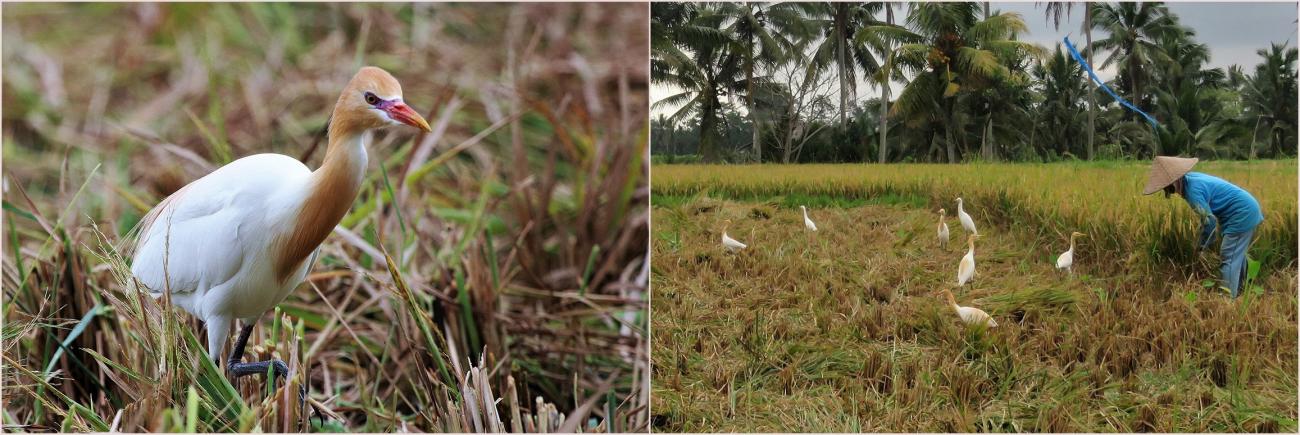Cattle Egret

Bali, Indonesia
Cattle egrets are a very successful species and over the last century have spread outwards from Spain, Portugal and the tropics and subtropics of Africa and Asia. They are now a common species in southern Africa, the Americas, Europe and Australasia. The global population has reached an estimated 3.8 to 6.7 million individuals. They thrive in a wide range of terrestrial habitats including grasslands, farmlands, wetlands and rice paddies. They exploit drier and more open habitats than other egret and heron species. Some populations are highly migratory. The photograph on the right was taken in Bali Indonesa and shows cattle egrets foraging on prey disturbed by the farmer harvesting his crop. The photograph on the left is of a male in breeding plumage.
Feeding
This species has a symbiotic relationship with cattle and other large grazing mammals and its rapid expansion correlates with that of its symbiotic partners: in a mutually beneficial relationship, the cattle egret feeds on the ticks and flies that prey on grazing mammals. The cattle egret also hunts for a wide range of other prey, including insects as well as spiders, earthworms, amphibians and reptiles. They hunt most successfully when close to large grazing mammals which disturb small creatures causing them to break cover.
Breeding
The cattle egret changes partner each season. It nests in woodland colonies close to water and often with wetland birds such as ibises, cormorants and herons. The nest consists of an untidy platform made of sticks usually in a tree or tall shrub and built by both male and female birds. The male collects the nesting material and the female deposits it. Stick stealing is common place in the colony. Both parents feed the chicks.
Wildfile Specials
- Cattle egrets are promiscuous and 30% of sexual activity is outside their pair bond.
- Sibling rivalry can be ruthless and in South Africa; third and fourth chicks always die from starvation.
- Cattle egrets practice some brood parasitism with eggs laid in the nests of little blue herons and snowy egrets, as well as other cattle egrets.
- In Africa, cattle egrets follow zebras, wildebeest, waterbuck and cape buffalo. The dominant birds feed closest to their selected mammals and get the most food.
- The cattle egret carries a number of diseases between animal herds, often a long distance from their source.
- Cattle egrets are known to be a safety hazard to aircraft because they feed in flocks close to airport runways.